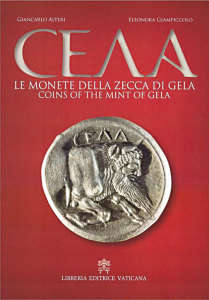
Coins of the Mint of Gela, by Giancarlo Altieri and Eleonora Giampiccolo.
Le monete della Zecca di Gela (“The Coins of the Mint of Gela”) is the title of this bilingual (Italian, English) volume published by the Vatican Publishing House. It showcases the coins of the ancient Sicilian city of Gela, preserved both at the Archeological Museum of Sicily and at the Vatican Apostolic Library’s Numismatic Cabinet, or Medagliere.
Giancarlo Alteri, past Conservator-Restorer at the Vatican Apostolic Library’s Numismatic Cabinet, and current head of the Milano Cabinet, and Eleonora Giampiccolo, current head of the Vatican Apostolic Library’s Cabinet, co-authored the book.
“Some 2,700 years of history told through the precious treasury of coins from Gela’s mint, preserved in our city’s museum” is how Gela’s mayor, Angelo Fasulo, sums up the new book in the preface. For him, it is a “duty” to “succeed in transmitting to the younger generations the knowledge that they live in an extraordinary city, where every corner evokes the echoes of the past, and every little trace of history represents a mark of profound knowledge.”
The Prologue, “Elegia delle Mura” (“Elegy of the Walls”) was written by Giovanni Chiaramonte, an internationally-known photographer and Professor of Theory and History of Photography at Milano’s IULM University. This section proposes 21 photos of Timoleon’s Walls, Gela’s ancient Greek fortifications, built between the 4th and 3rd centuries before Christ.
After an introduction describing the city’s history, from its founding to its destruction in 282 B.C., there is an extensive catalogue, in which the coins issued by the ancient city of Gela during its Greek period, and preserved in its Archeological Museum, are listed. The catalogue is divided into two parts. The first is dedicated to silver coins: they are almost exclusively coins with the same type of inscriptions, and they have been grouped according to the position of the writings on their faces. The second part is dedicated to bronze coins, with photos of several archeological finds of particular value, conserved at the Gela Museum. The volume is completed by an appendix offering a brief history of the Vatican Library’s Medagliere, which precedes a catalogue of the 18 coins of ancient Gela preserved in the Vatican, among which there are examples that are not present in the collection in Gela, and many of which are noteworthy for their excellent state of preservation. The volume was presented on Saturday, January 10, at the Archeological Museum of Gela, by Father Giuseppe Costa, Director of the Vatican Publishing House, in the presence of Museum Director Ennio Turco and the two authors.
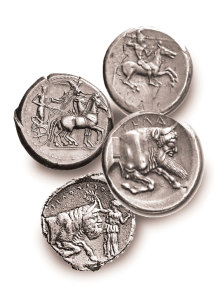
Ancient coins from Gela, Sicily.
“A book about Gela’s ancient coins will catapult this ancient Greek city onto the international stage, with the help of the Vatican Publishing House and the Vatican’s numismatic collection,” Father Costa observes. “We produce material for the North American and Northern European markets, and publishers in both areas have been informed of this new volume; they can translate it into other languages, if they so desire. A German publisher has already shown interest. This is the first time that two numismatic experts have written a book about Gela’s coin-making. It was made possible through the cooperation of the museum of Gela, and the city acquired a number of copies at a reduced price (€19.20) for distribution in schools and the local library. This book gives great incentive for appreciating this area’s rich heritage.”
Rosario Crocetta, President of the Region of Sicily, called the book “high recognition for the historical and cultural prestige of the Gela mint, one of the largest collections of coins of ancient Greek civilization.
“The engravings present two opposing faces of history: the coins are witnesses to eras of democracy, and eras of tyranny as well.
“The figures represented on the coins are also symbols of great abundance and wealth. Their fine, subtle manufacturing brings us back to a time when Sicily was one of the most modern centers of the Mediterranean, in terms of industry as well as of art, agriculture, and cavalry.
“Sicily’s path to development cannot stray from a rediscovery of the Sicilian identity, and, therefore, a mature rediscovery of the Sicilian identity cannot stray from a deep knowledge of our cultural inheritance,” Crocetta continues.
“These coins are a striking testimony to an industrious people, open to all kinds of exchange and lively in trade and commerce, and to a land that is a crossroads of peoples and values, capable of welcoming and giving value to the various sensitivities of the Mediterranean, in a blend of influences that are unique and unrepeatable, and that never lose their ability to fascinate.”

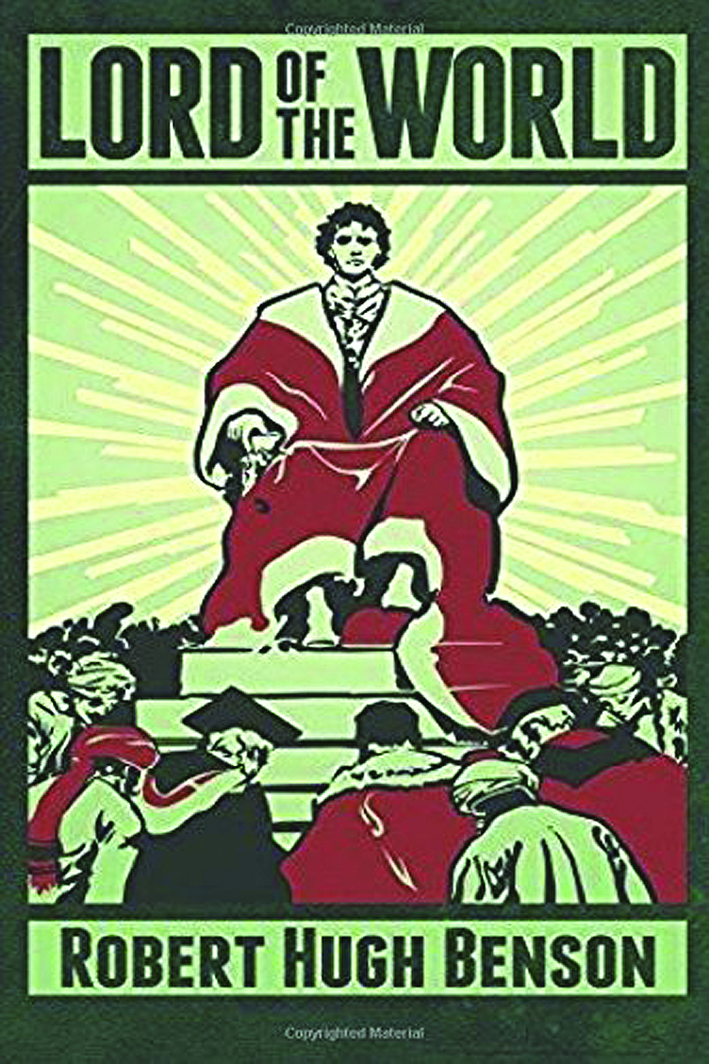
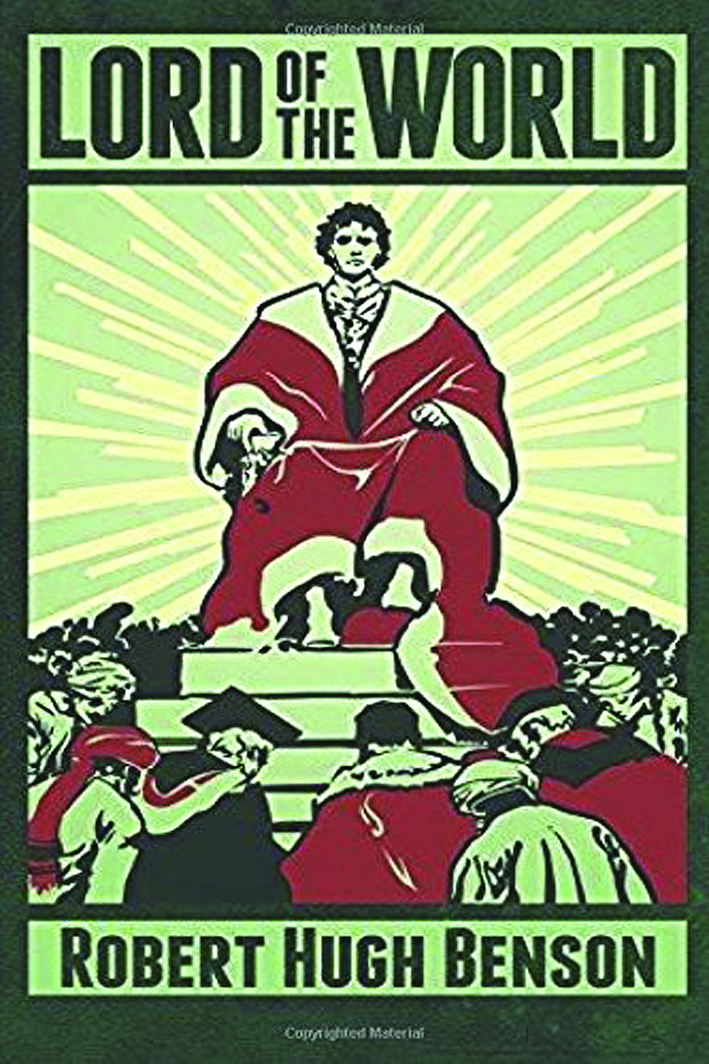
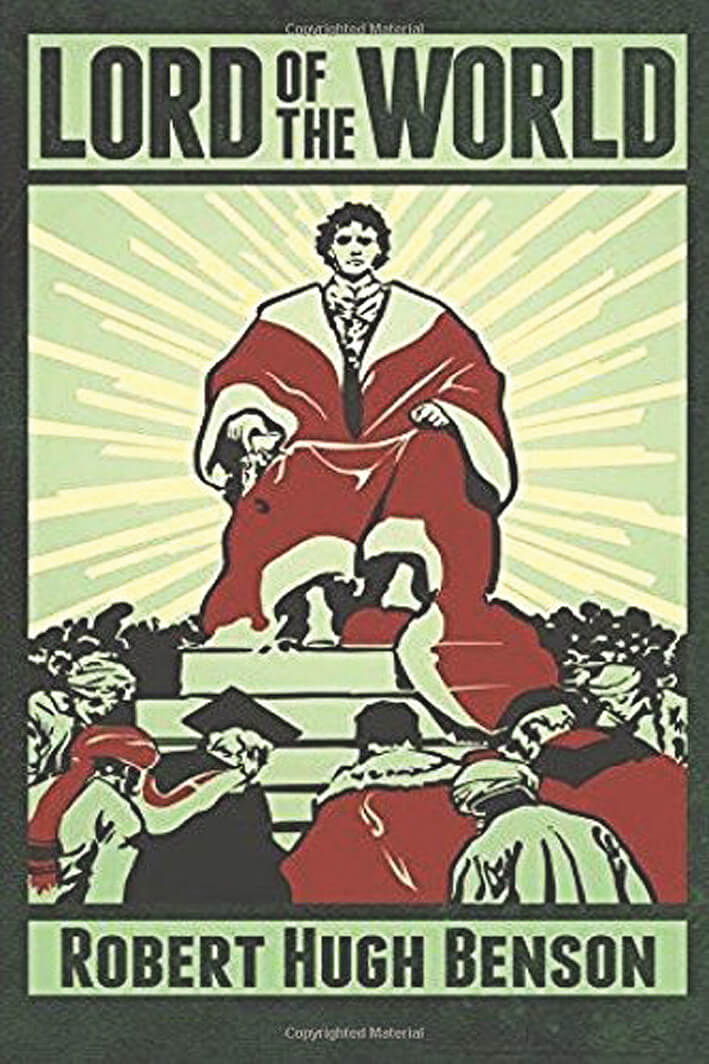
Facebook Comments